Not all wildlife removal companies are the same. Some have experience with bat removal projects, and are familiar with the proper methods for
bat exclusion. But others use incorrect techniques, such as bat traps, summer exclusions, or worse, fumigants. Do your research before you hire someone! I personally recommend our field technician for bat control in Syracuse.
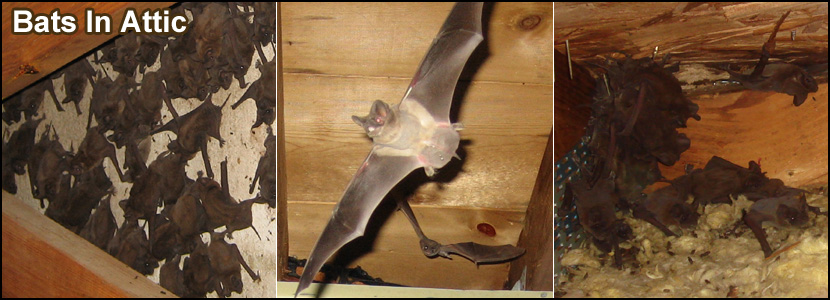
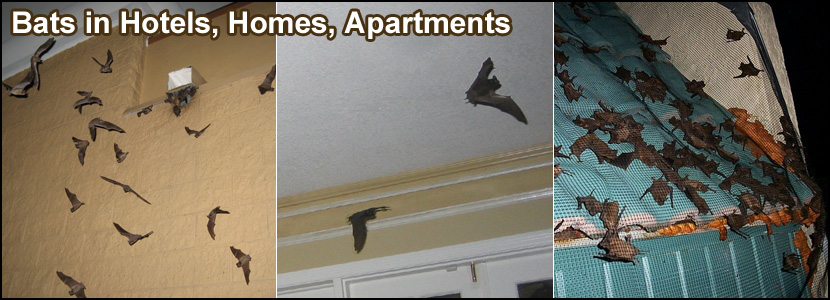
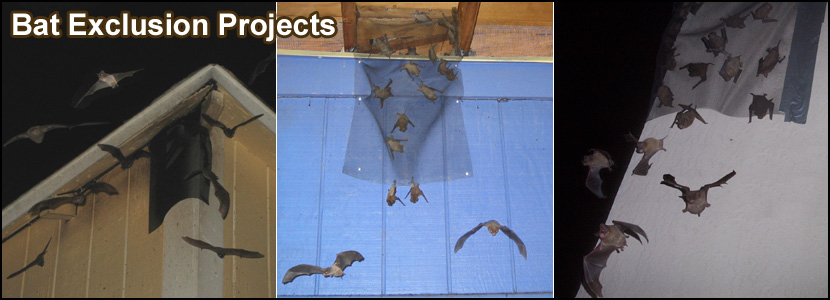
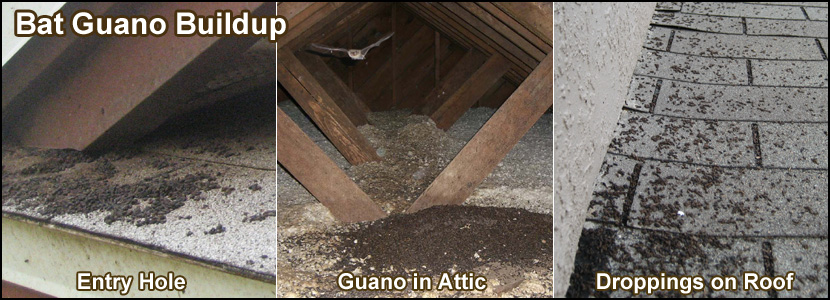
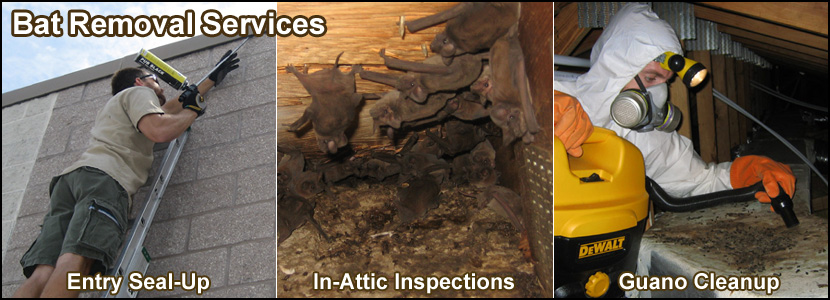
Before you hire anyone, including our tech at 315-505-4769, talk to them, and make sure that they understand what they are doing, and that they have experience. Be sure that they do abide by the principles I outlined above. This is not just for the sake of the bats - I'm no tree hugger - it's for the sake of doing the job correctly, for you and your property. The fact that it's good for the bats as well is a lucky coincidence. And really, bats are good animals, which I'm sure you realize. I hope you have a good experience with your Syracuse bat control project. You can email me personally if you have any problems with our tech, and I will talk to him, but I doubt that will be necessary. Good luck!
Syracuse wildlife control company bat reader email:
Little Brown Bat Habitat - The bats have been known to live in day roosts, hibernation roosts and night roosts. They have, therefore, been seen to live in three different roosting sites. The day and night roosts are mainly used during the seasons of spring, fall and summer. On the other hand, the hibernation roosts are typically used during the winter. Day roosts are typically found in buildings, under rocks, in caves and in trees among others. In addition, nursery roosts can be found in natural hollows and also in buildings. As for night roosts, they are often found in places where day roosts can be found. However, the night roosts need to be in places that are constrained, so as to keep the bats together for warmth. After the evening feeding, bats rest in their night roost, which helps to keep their waste out of the day roosts, thus, keeping them away from the notice of predators.
Little Brown Bat Diet - Little brown bats eat things like gnats, moth, mosquitoes, wasps, mayflies and midges among others. They are, therefore, insectivores and prefer to roost near water, so that they can eat insects that have an aquatic life stage. When the bats need to find prey, they echolocate. They are extremely good at hunting insects, especially if they are packed together. They capture their prey with their wings as they are still flying. If the prey is in the water, they grab it with their mouth.
My tenant has seen a bat in the basement. We live in Syracuse (Central New York). I have spoken with Al of Animal Control (same man YOU recommend for our area). He has informed me that this is not the time to seal the home from further bat penetration because we do not want to "seal the bats in" or have the caulking and foam dry and crack because it is getting cold here!! In you professional opinion, when is the best time to seal the home for bat exclusion? I did notice the maternity date you posted. My tenant is highly irate that I am not taking care of the situation immediately. ( I did have a professional out to the house to search for the bat in the basement and it could not be found.) However, I was going on Al's advice that now is not the time to seal the home. Do you agree? By the way, I thoroughly enjoyed your website. It was extremely informative.
You can read more of my bat removal articles below:
How to catch a bat flying inside house
How to remove bats in the chimney
How to clean your attic after you've had bats
What kind of damage do bats cause?
What kinds of diseases can bats spread?
How do you find the areas where bats are getting in?
Can I use poison to kill bats?
What does bat poop look like?
Can I use traps to catch bats?
For bat removal in Syracuse, call us at 315-505-4769. We can remove bats in attics throughout Onondaga County and even the state of New York, but we mostly operate in the greater Syracuse area, as the recognized best bat control company in the area.
24/7 Cell Phone: 315-505-4769





I have communicated with our bat expert in Syracuse for many years, and he abides by these bat removal principles:
- Always perform a proper live exclusion.
- Never use poisons or fumigants or kill bats.
- Never use traps or attempt to relocate bats.
- Never do a removal during the maternity season.
- Seal all entry points shut with guarantee.
- Offer attic cleanup and decontamination.
- Properly New York licensed and insured.
Before you hire anyone, including our tech at 315-505-4769, talk to them, and make sure that they understand what they are doing, and that they have experience. Be sure that they do abide by the principles I outlined above. This is not just for the sake of the bats - I'm no tree hugger - it's for the sake of doing the job correctly, for you and your property. The fact that it's good for the bats as well is a lucky coincidence. And really, bats are good animals, which I'm sure you realize. I hope you have a good experience with your Syracuse bat control project. You can email me personally if you have any problems with our tech, and I will talk to him, but I doubt that will be necessary. Good luck!
Syracuse wildlife control company bat reader email:
Little Brown Bat Habitat - The bats have been known to live in day roosts, hibernation roosts and night roosts. They have, therefore, been seen to live in three different roosting sites. The day and night roosts are mainly used during the seasons of spring, fall and summer. On the other hand, the hibernation roosts are typically used during the winter. Day roosts are typically found in buildings, under rocks, in caves and in trees among others. In addition, nursery roosts can be found in natural hollows and also in buildings. As for night roosts, they are often found in places where day roosts can be found. However, the night roosts need to be in places that are constrained, so as to keep the bats together for warmth. After the evening feeding, bats rest in their night roost, which helps to keep their waste out of the day roosts, thus, keeping them away from the notice of predators.
Little Brown Bat Diet - Little brown bats eat things like gnats, moth, mosquitoes, wasps, mayflies and midges among others. They are, therefore, insectivores and prefer to roost near water, so that they can eat insects that have an aquatic life stage. When the bats need to find prey, they echolocate. They are extremely good at hunting insects, especially if they are packed together. They capture their prey with their wings as they are still flying. If the prey is in the water, they grab it with their mouth.
My tenant has seen a bat in the basement. We live in Syracuse (Central New York). I have spoken with Al of Animal Control (same man YOU recommend for our area). He has informed me that this is not the time to seal the home from further bat penetration because we do not want to "seal the bats in" or have the caulking and foam dry and crack because it is getting cold here!! In you professional opinion, when is the best time to seal the home for bat exclusion? I did notice the maternity date you posted. My tenant is highly irate that I am not taking care of the situation immediately. ( I did have a professional out to the house to search for the bat in the basement and it could not be found.) However, I was going on Al's advice that now is not the time to seal the home. Do you agree? By the way, I thoroughly enjoyed your website. It was extremely informative.
You can read more of my bat removal articles below:
How to catch a bat flying inside house
How to remove bats in the chimney
How to clean your attic after you've had bats
What kind of damage do bats cause?
What kinds of diseases can bats spread?
How do you find the areas where bats are getting in?
Can I use poison to kill bats?
What does bat poop look like?
Can I use traps to catch bats?
For bat removal in Syracuse, call us at 315-505-4769. We can remove bats in attics throughout Onondaga County and even the state of New York, but we mostly operate in the greater Syracuse area, as the recognized best bat control company in the area.